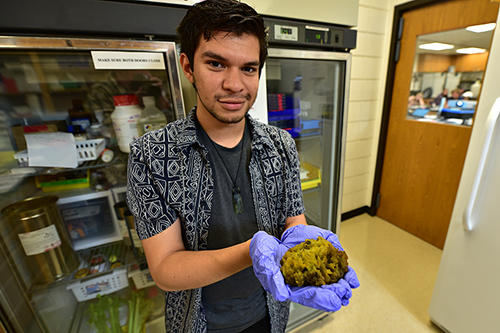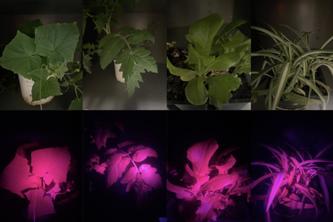
When people think of sponges, they picture colorful organisms in the ocean or, even likelier, pads used to clean their cooking pots. But there are also sponges living in our freshwater lakes and rivers. Despite their important connection to the health of freshwater ecosystems, these simplest of animals have, for the most part, been overlooked.
Thanks to a grant from the Legislative-Citizen Commission on Minnesota Resources, a team of four investigators from the University of Minnesota Crookston is learning more about these mysterious animals.
The team—with the help of several undergraduates—is picking up on work begun by a U of M grad student in the early 1970s, whose research identified five species of freshwater sponges. The UMC researchers are collecting and identifying sponges using technology unavailable in the 1970s, and they’re generating new data that could reveal a great deal more about the sponges and their environment.
"We're excited to take a new look at freshwater sponges using molecular biology and other modern research techniques," says Anthony Schroeder, assistant professor in UMC's Math, Science, and Technology Department.
Freshwater sponges are immobile, but constantly filtering water through their network of pores to gain food and perhaps collect pollutants, as well. Chemical analysis will help determine if there are hazardous organic compounds harbored by the sponges. Earlier research indicates that freshwater sponges tend to locate in pristine waters; therefore, they may serve as indicators of the quality of water in the lakes they inhabit.
The researchers plan to investigate freshwater sponge species in each of the 10 major watersheds in Minnesota. They’ll collect sponges from two lakes or rivers in each watershed, identify them, and map their distribution across the state.
Eventually, Schroeder says, the goal is to integrate sponge research into the curricula for students in selected science courses at the UMC.
- Categories:
- Agriculture and Environment





